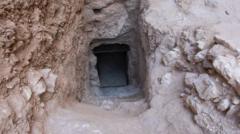Antonis Bartsiokas has proposed that a purple-and-white fabric discovered in a tomb in northern Greece belonged to Alexander the Great, challenging previous beliefs about the burial site and igniting discussions within the archaeological community.
New Claims Question the Origins of an Ancient Fabric Linked to Alexander the Great

New Claims Question the Origins of an Ancient Fabric Linked to Alexander the Great
A controversial assertion from a Greek paleoanthropologist suggests that a piece of fabric found in a tomb may have belonged to Alexander, sparking debate among archaeologists.
Could it be a remnant from the celebrated attire of Alexander the Great? A tattered piece of purple-and-white fabric, dating back over two millennia, found decades ago in a tomb in northern Greece, is stirring significant debate among historians and archaeologists. Antonis Bartsiokas, a paleoanthropologist from Democritus University of Thrace, recently published a paper asserting that this fabric, initially believed to be connected solely to Alexander's father, Philip II, may instead have belonged to Alexander himself or potentially to his half-brother.
This claim stands in stark contrast to the earlier assertions of Manolis Andronicos, a leading figure in Greek archaeology who discovered the tomb in 1977. He maintained that it contained the remains and treasures of Philip II, a pivotal figure in ancient Greek history whose military achievements facilitated Alexander's own extraordinary conquests. Bartsiokas posits that it was actually Arrhidaeus, also known as Philip III, who occupied the tomb, alongside items belonging to Alexander, one of which is suggested to be the purple chiton.
If Bartsiokas's theory gains traction within the scholarly community, it could significantly alter existing narratives surrounding one of Greece's most critical archaeological sites. Yet, many Greek archaeologists remain skeptical, questioning the validity of his claims. To support his argument, Bartsiokas employed advanced technology and reevaluated iconography within an ancient frieze, insinuating a new perspective on this critical historical context.



















